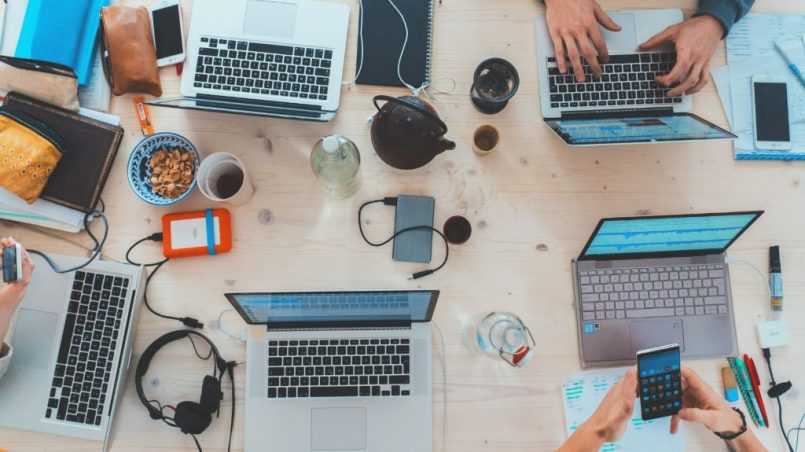Technology has become deeply woven into our daily lives. From smartphones to social media, we rely on digital devices for work, communication, and entertainment. However, this growing dependence raises important questions about our mental health. Organizations like Equality Alabama recognize the need to address how technology affects our well-being and advocate for balanced digital habits.
The relationship between technology use and anxiety is complex. While digital tools offer many benefits, excessive reliance can create stress, fear of missing out, and social comparison issues. Understanding this connection helps us make informed decisions about our technology consumption. Research shows that people who spend more time on devices often experience higher anxiety levels.
Many experts examine the advantages and disadvantages of technology to better understand its impact on mental health. Additionally, studies reveal that constant connectivity can overwhelm our nervous systems. Therefore, recognizing the signs of tech dependency becomes crucial for maintaining psychological balance.
Understanding Technology Dependency
Technology dependency occurs when people feel unable to function normally without their devices. This condition manifests through various behaviors and emotional responses. Users may experience panic when separated from their phones or feel compelled to check notifications constantly.
Common signs include checking devices first thing in the morning and last thing at night. People may also feel anxious when battery levels drop or internet connections fail. Furthermore, many individuals struggle to engage in activities without simultaneously using technology.
The psychological aspects of dependency involve dopamine release patterns. Each notification triggers a small reward response in the brain. However, this creates a cycle where users need increasingly frequent digital stimulation to feel satisfied. Consequently, periods without technology can feel uncomfortable or distressing.
The Anxiety Connection
Technology dependency directly contributes to anxiety through several mechanisms. Constant connectivity creates pressure to respond immediately to messages and notifications. This expectation generates chronic stress as people feel always “on” and available.
Social media platforms particularly amplify anxiety through comparison culture. Users constantly see curated versions of others’ lives, leading to feelings of inadequacy. Additionally, the fear of missing out drives compulsive checking behaviors that disrupt sleep and focus.
Information overload represents another significant factor. The constant stream of news, updates, and content can overwhelm cognitive processing abilities. Therefore, many people experience decision fatigue and mental exhaustion from managing digital information flow.
Sleep disruption from evening screen time affects anxiety levels significantly. Blue light exposure interferes with natural circadian rhythms, reducing sleep quality. Poor sleep then increases vulnerability to anxious thoughts and emotional reactivity.
Physical and Mental Symptoms
Tech dependency anxiety manifests through various physical symptoms. People may experience headaches, eye strain, and neck pain from prolonged device use. Additionally, many report feeling restless or jittery when away from technology.
Mental symptoms include difficulty concentrating without digital stimulation. Many individuals struggle with sustained attention on single tasks. Furthermore, constant multitasking between devices can fragment thinking processes and reduce cognitive efficiency.
Emotional symptoms encompass irritability when technology malfunctions or becomes unavailable. Users may feel disconnected from reality or experience phantom vibration syndrome. Moreover, some people develop social anxiety when forced to interact without digital mediators.
According to the American Psychological Association, technology use significantly impacts stress levels across all age groups. Their research indicates that constant connectivity prevents proper mental recovery time.

Demographics Most Affected
Young adults and teenagers show the highest rates of technology dependency anxiety. This generation grew up with smartphones and social media as integral parts of social development. However, they often lack developed coping mechanisms for managing digital overwhelm.
Working professionals face unique challenges with technology anxiety. The expectation to remain constantly available for work communications blurs boundaries between personal and professional time. Additionally, remote work arrangements can intensify dependency on digital tools for social connection.
Parents experience anxiety about their children’s technology use while managing their own digital habits. This creates complex family dynamics around screen time and device usage. Furthermore, older adults adopting new technologies may feel overwhelmed by rapid changes and learning curves.
Students represent another vulnerable population as educational systems increasingly rely on digital platforms. The pressure to maintain online presence for academic and social success can create chronic stress.
Breaking the Cycle
Addressing technology dependency requires intentional behavior changes and boundary setting. Digital detox periods allow the nervous system to reset and reduce anxiety levels. Start with short breaks and gradually extend offline time.
Creating technology-free zones in homes helps establish healthy boundaries. Bedrooms and dining areas work well as device-free spaces. Additionally, implementing “no phone” times during meals or family activities strengthens real-world connections.
Notification management reduces constant interruption anxiety. Turn off non-essential alerts and establish specific times for checking messages. Therefore, you can regain control over when technology demands attention.
Mindfulness practices help develop awareness of technology use patterns. Regular meditation or breathing exercises create mental space between stimulus and response. Furthermore, mindful technology use involves conscious choices about when and how to engage with devices.
Healthy Technology Habits
Developing structured technology routines reduces anxiety-inducing chaos. Set specific times for email checking, social media browsing, and news consumption. Additionally, create transition rituals between digital and offline activities.
Quality sleep hygiene requires limiting screen exposure before bedtime. Use blue light filters or avoid devices entirely for at least one hour before sleep. Moreover, charging devices outside the bedroom eliminates nighttime temptation and improves rest quality.
Exercise and outdoor activities provide natural anxiety relief while reducing technology dependence. Physical movement helps process stress hormones and improves mood regulation. Therefore, regular exercise becomes essential for managing tech-related anxiety.
Building real-world social connections counteracts digital isolation effects. Face-to-face interactions provide emotional fulfillment that online relationships cannot fully replace. Furthermore, in-person activities create natural breaks from technology use.
Professional Help and Resources
Mental health professionals increasingly recognize technology dependency as a legitimate concern. Therapists can help develop personalized strategies for managing digital anxiety. Additionally, cognitive behavioral therapy techniques prove effective for changing problematic technology use patterns.
Support groups provide community for people struggling with similar issues. Many organizations offer both online and in-person resources for technology addiction recovery. However, online support should complement rather than replace real-world connections.
Educational programs teach digital literacy skills that promote healthier technology relationships. These programs help people understand how technology affects mental health. Furthermore, they provide practical tools for maintaining balance in digital environments.
Some individuals may benefit from app-based tools that monitor and limit device usage. However, these solutions work best when combined with underlying behavior change strategies.
Conclusion
Technology dependency can indeed cause significant anxiety through various psychological and physiological mechanisms. The constant connectivity, social comparison, and information overload inherent in modern digital life create chronic stress responses. However, awareness of these effects empowers individuals to make conscious choices about their technology use.
Breaking free from problematic technology patterns requires intentional effort and often professional support. By implementing healthy boundaries, practicing mindfulness, and prioritizing real-world connections, people can reduce technology-related anxiety. The goal is not to eliminate technology entirely but to develop a balanced relationship that enhances rather than detracts from mental well-being.
Frequently Asked Questions
How much screen time is considered excessive? Experts suggest more than 7-8 hours of recreational screen time daily may indicate problematic use. However, the quality and purpose of technology use matter more than total time spent.
Can technology anxiety affect sleep quality? Yes, technology use before bedtime disrupts natural sleep cycles through blue light exposure and mental stimulation. This creates a cycle where poor sleep increases anxiety sensitivity.
What are the first signs of technology dependency? Early warning signs include feeling anxious when separated from devices, checking phones immediately upon waking, and difficulty focusing without digital stimulation.
Is it possible to overcome technology anxiety completely? While complete elimination may not be realistic in our digital world, people can significantly reduce technology-related anxiety through mindful use practices and healthy boundaries.
When should someone seek professional help for technology anxiety? Consider professional support if technology use interferes with work, relationships, sleep, or daily functioning, or if anxiety symptoms persist despite self-help efforts.
Read More:
DO CMMC CONSULTANTS WORK WITH EXISTING CYBERSECURITY SYSTEMS
SMART WORKING: LG HAVE TWO SOLUTIONS FOR A PRODUCTIVITY-PROOF HOME OFFICE


